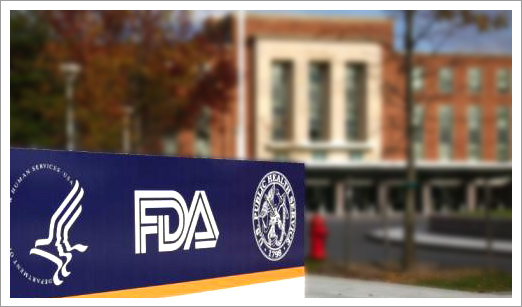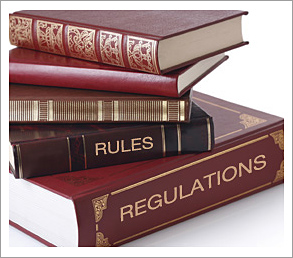Regulation of Tobacco By The U.S. Food and Drug Administration (FDA)
 Prior to 1996, the FDA played no role in the regulation of tobacco products, and regulations were controlled through a combination of state and congressional regulations. Most state laws dealt with the sale of tobacco products, including the issue of selling to minors and licensing of distributors.
Prior to 1996, the FDA played no role in the regulation of tobacco products, and regulations were controlled through a combination of state and congressional regulations. Most state laws dealt with the sale of tobacco products, including the issue of selling to minors and licensing of distributors.
By 1950, all states had laws prohibiting the sale of tobacco products to minors, for whom the purchase age differed at the time in each state.
In 1964, Surgeon General Luther Terry issued a report on smoking and health saying that tobacco causes lung cancer and is a main contributor to bronchitis. Subsequently, in 1965, the US Congress passed the Federal Cigarette Labeling and Advertising Act (FCLAA), which required a health warning on all cigarette packs. In 1970, President Richard Nixon signed the Public Health Cigarette Smoking Act banning cigarettes ads on the radio or television. It also required an updated warning on the cigarette packages which read: "Warning: The Surgeon General has determined that cigarette smoking is dangerous to your health."
In 1996, the FDA issued the "FDA Rule," proclaiming its authority over tobacco products and issued a rule intended to prevent and reduce the tobacco use by children. The intended regulations included prohibiting non-face-to-face sales of tobacco products, prohibiting outdoor advertising of tobacco products near schools or playgrounds, imposing more stringent advertising regulations, and prohibiting brand name sponsorships, among other things.
After the regulations were issued in 1996, tobacco companies sued. In the 2000 Supreme Court case FDA v. Brown & Williamson Tobacco Corp., the court ruled that Congress had not given the FDA authority over tobacco and tobacco marketing.
As a result, Congress was forced to provide explicit FDA authority to regulate tobacco and this was finally accomplished via the passage of the Family Smoking Prevention and Tobacco Control Act in 2009.
Federal Regulations of Tobacco
 On June 22, 2009, President Barack Obama signed into law the Family Smoking Prevention and Tobacco Control Act, giving the U.S. Food and Drug Administration (FDA) comprehensive authority to regulate the manufacturing, marketing, and sale of tobacco products. The new law represents the most sweeping action taken to date to reduce what remains of the leading preventable cause of death in the United States.
On June 22, 2009, President Barack Obama signed into law the Family Smoking Prevention and Tobacco Control Act, giving the U.S. Food and Drug Administration (FDA) comprehensive authority to regulate the manufacturing, marketing, and sale of tobacco products. The new law represents the most sweeping action taken to date to reduce what remains of the leading preventable cause of death in the United States.
Before enactment of the new law, tobacco products were largely exempt from regulation under the nation's federal health and safety laws, including the Food, Drug, and Cosmetic Act. The FDA has regulated food, drugs and cosmetics for many decades, but not the tobacco products, except in those rare circumstances when manufacturers made explicit health claims.
The Tobacco Control Act contains several provisions related to the retail environment. Perhaps most notably, the law-mandated restrictions on the sales, marketing, and advertising of cigarettes and smokeless tobacco.
The Tobacco Control Act expands the ability of state and local governments to regulate tobacco product advertising. It also prohibits tobacco products from being marketed with health descriptors such as "light," "mild," or "low," unless the FDA has specifically approved the marketing.
Additionally, the Tobacco Control Act created new requirements for warnings for cigarettes and smokeless tobacco, both on the products themselves and on any advertising for the product – including advertisements in retail stores. Cigarette packages and cigarette advertising must contain specific textual warnings. The law also requires the FDA to create warnings that graphically depict the dangers of cigarette smoking, and created new text warnings for smokeless tobacco packages and advertising.
What The New Law Does
The Family Smoking Prevention and Tobacco Control Act adds a new Chapter IX to the Food, Drug, and Cosmetic Act, establishing and governing the regulation of tobacco products. A new Center for Tobacco Products has been created within the FDA to establish tobacco product standards, among other things. Chapter IX vests the FDA with jurisdiction to regulate both current and new tobacco products and restrict tobacco product marketing, while also directly implementing provisions that will, among other things, restrict tobacco product marketing and advertising, strengthen cigarette and smokeless tobacco warning labels, reduce federal preemption of certain state cigarette advertising restrictions, and increase nationwide efforts to block tobacco product sales to youth.